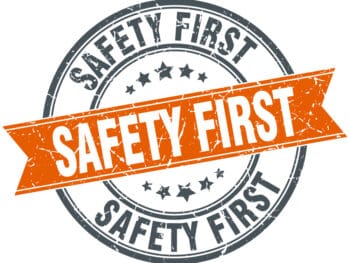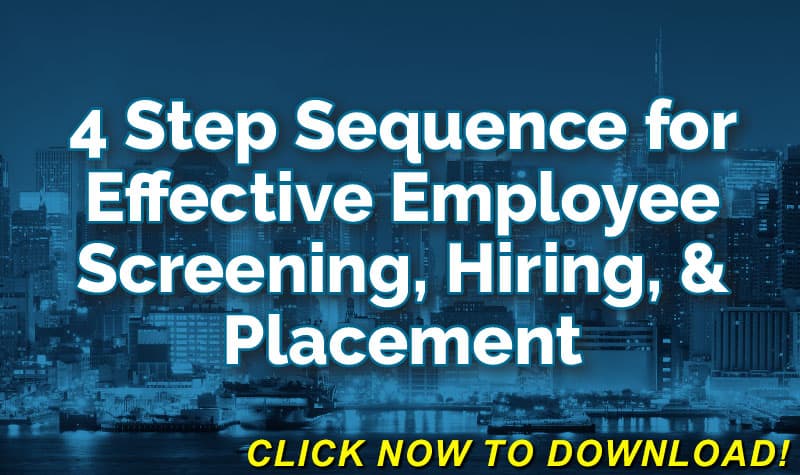
Some jurisdiction, such as California, require employers to pay for treatment of a comorbidity if it hampers recovery. Even in states that don’t have that requirement, it still benefits payers to identify and address comorbid conditions that are present or, ideally, try to prevent them in the first place.
Click Link to Access Free PDF Download
“4-Step Sequence For Effective Employee Screening, Hiring, & Placement”
The Stats
The rate of claims with comorbid conditions per claim nearly tripled between 2000 and 2009. These claims are more likely to include lost time and have about two times higher medical costs than comparable claims.
Obesity, addiction, mental health and hypertension are those with the greatest impacts on negative outcomes. Obese workers, for example, file two times as many claims as non-obese workers, have medical costs that are seven times higher, and incur an average 13 times more days away from work.
Diabetes has one of the lowest impacts on claims among comorbidities; and yet it is associated with increased recovery times, delayed healing, an increase in the likelihood of infections and other complications, and results in increased reserves.
When more than one comorbidity is present the increases are staggering.
- 76 percent increase in claims duration.
- 341 percent increase in total incurred costs.
- 285 percent increase in temporary total disability days.
- 147 percent increase in litigation rates
- 123 percent increase in surgery rates.
Pre-Loss Strategies
Preventing chronic health conditions is the best way to avoid the challenges of comorbidities in workers’ compensation claims. There are a variety of actions employers are finding to improve the health habits of their employees, many of which are fairly inexpensive.
- Know your risks. All workplaces are not the same and the health risks facing your employees may be different from those of other organizations. You can assess and make decisions based on that. Health risk assessments are usually available through your insurer or EAP and can determine aggregate information on things such as physical activity, nutrition, weight and family history, without violating individual privacy.
- Wellness. These encompass a wide variety of activities. They may be formalized programs or just a few simple steps. For example, changing snacks in vending machines from chips and candy to fresh fruit, and sodas to water is one option. Bringing in nutrition and/or diet experts to talk with employees and, if financially feasible, create programs for workers is another idea.
Employees with sedentary jobs can be encouraged to move more, whether through gym memberships, group walks during lunch, or access to resources about community activities such as fun runs/walks. Weight management initiatives and smoking cessation programs can be done either onsite or within the local community and can help reduce the risk of a number of comorbidities. Finding internal wellness champions, or other workers who are devoted to the wellness plans can help generate interest among employees.
- Sit/stand options. The hazards of prolonged sitting are being increasingly recognized and have led some employers to invest in sit/stand workspaces. Employees can also be encouraged to stand more, by giving them the option to stand during meetings.
- Information. Tidbits to promote healthier habits can be provided via email, newsletters or educational workshops. Working with insurers and third-party administrators, or partnering with local medical facilities can be good sources of such information.
It’s also important to make sure your employees are fully aware of the health resources and programs that are available, such as employee assistance programs or specifics from your health benefits provider. Also, make sure you are taking full advantage of all resources available to you. You could also offer an anonymous ‘ask the expert’ initiative through you company’s intranet or internal newsletters. Someone from your insurer or a local medical professional could respond and the comments made available to your employees through internal communications.
Post Loss Strategies
The sooner you are aware of comorbidities in a claim the faster you can intervene with appropriate treatment and ensure best outcomes. Such knowledge also helps set realistic expectations for recovery and return to work. Be aware too that some comorbidities — such as depression — might not be present until the claim is in progress. There are several ways to identify comorbidities:
- Patient intake. Treating physicians and nurse case managers should be instructed to collect and record the injured worker’s health beyond just the occupational injury or illness, to determine if comorbidities are present.
- Monitor the data. Looking at data continually will signal if a new comorbid condition has developed. That allows earlier treatment of these conditions and may also signal a poor response to the treatment. In some cases, that could actually prevent litigation.
- Look at the meds. Pharmacy benefit managers should review medications to see if the injured worker is filling those prescribed and also determine if other drugs are being purchased that may interfere with them. Physicians should be instructed to access the prescription drug monitoring program, if one is available. Such information could signal the injured worker is taking medications for an undisclosed comorbidity.
Conclusion
When comorbidities are identified in a claim, all team members should become involved in a coordinated treatment plan. The treating physician, injured worker, claims adjuster, nurse case managers and others should work together to make sure the comorbid conditions are properly treated in conjunction with the occupational injury or illness.
For additional information on workers’ compensation cost containment best practices, register as a guest for our next live stream training.

Contact: mstack@reduceyourworkerscomp.com.
Workers’ Comp Roundup Blog: https://blog.reduceyourworkerscomp.com/
Live Stream WC Training: http://workerscompclub.com/livestreamtraining
©2017 Amaxx LLC. All rights reserved under International Copyright Law.
Do not use this information without independent verification. All state laws vary. You should consult with your insurance broker, attorney, or qualified professional.










